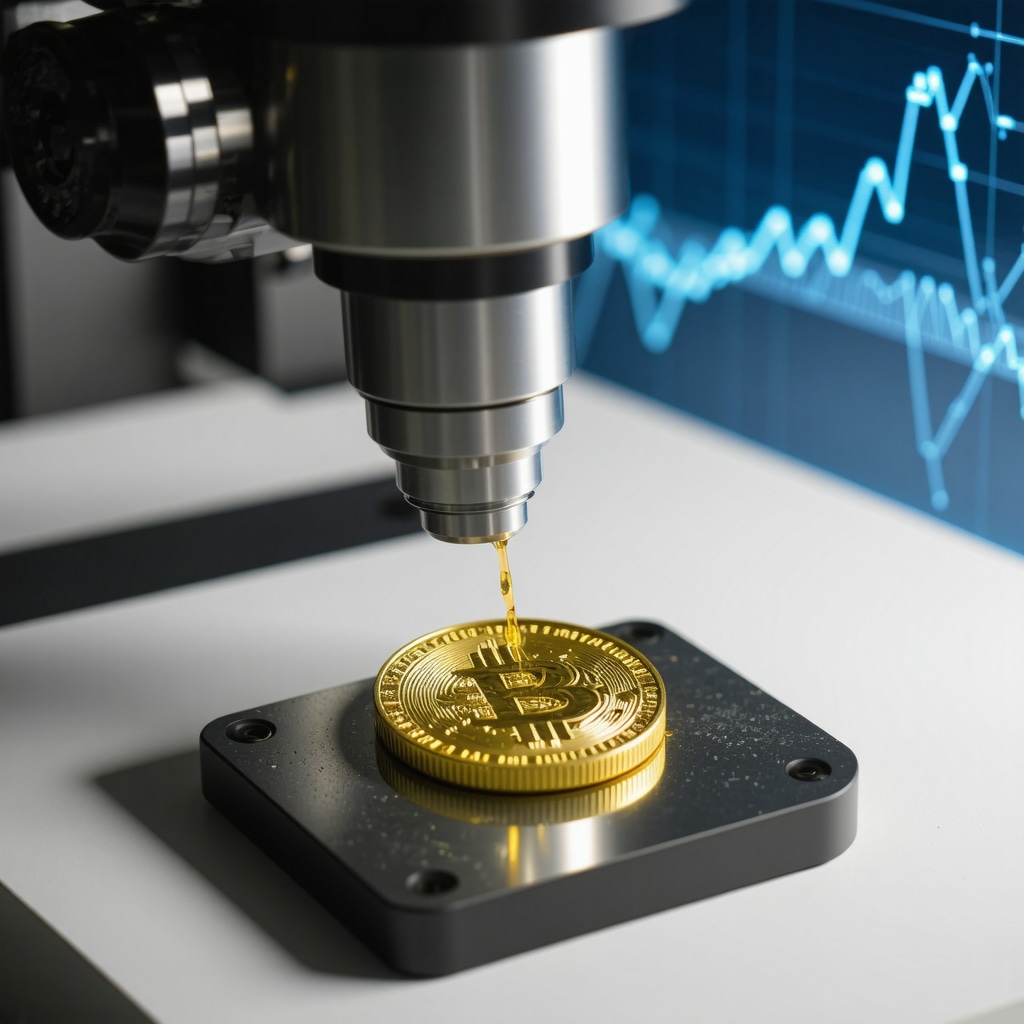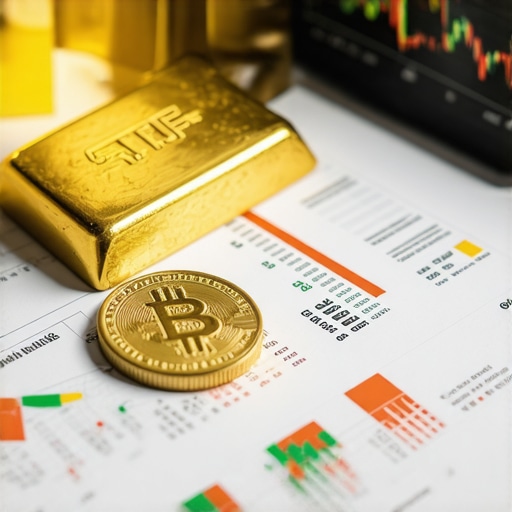Unlocking the Golden Door: Why New Investors Choose Gold Coins
Investing in gold coins offers a tangible, time-tested avenue for wealth preservation and portfolio diversification that resonates deeply with new investors. Unlike digital assets or stocks, gold coins carry intrinsic value, historic significance, and often appeal as collectible items. But stepping into this glittering world requires more than just enthusiasm—it demands knowledge, strategy, and a keen understanding of the market’s nuances.
Decoding the Market: Essential Factors Before Buying Your First Gold Coin
Before making your inaugural purchase, it’s vital to grasp key considerations such as the coin’s purity, weight, authenticity, and provenance. Gold coins vary widely—from government-minted bullion like the American Gold Eagle or Canadian Maple Leaf to rare numismatic pieces whose value transcends metal content. Understanding these distinctions shapes your investment’s potential return and liquidity.
How Can New Investors Ensure Authenticity and Avoid Counterfeits?
Authenticity is paramount in gold coin investment. New investors should acquire coins from reputable dealers who provide certification and guarantee purity. Employing techniques like weight verification, magnet tests, and seeking professional appraisals can prevent costly mistakes. Trusted sources, such as the Professional Numismatists Guild and guidelines from the World Gold Council, offer reliable frameworks to navigate authenticity concerns.
Step-by-Step Roadmap to Buying Gold Coins Safely
Step 1: Research and Select Trusted Dealers
Begin with thorough research to identify dealers with strong reputations and transparent pricing. Online reviews and industry accreditation serve as valuable indicators. For expert guidance on safe purchasing, refer to comprehensive guides like Buy Gold Safely: Top Tips for 2025 Physical Gold Investing.
Step 2: Choose the Right Gold Coin
Consider the coin’s liquidity, premiums above spot price, and your investment horizon. Popular bullion coins often offer better liquidity and lower premiums, while collectible coins may appreciate due to rarity.
Step 3: Verify Authenticity and Inspect the Coin
Request certificates of authenticity and, if possible, inspect the coin physically or through high-resolution images. Avoid deals that lack transparent provenance.
Step 4: Secure Storage Solutions
Post-purchase, prioritize secure storage—whether through bank safe deposit boxes or insured home safes. This safeguards your investment against theft or damage.
Investment Wisdom: Balancing Passion and Prudence
While gold coins can be captivating collectibles, new investors should balance emotional appeal with pragmatic investment strategies. Diversification across different forms of gold, including bullion bars and ETFs, can optimize portfolio resilience. For insights on how gold fits within broader investment strategies, explore resources such as Best Gold Investment Strategies to Maximize Returns 2025.
Join the Conversation: Share Your Gold Investment Experiences
Have you recently purchased gold coins or are considering your first buy? Share your insights, questions, or stories in the comments below. Your experience enriches this community of informed investors navigating the golden path together.
For further expert reading on the nuances of physical gold investments and market analysis, the World Gold Council’s historical insights provide a foundational understanding of gold’s enduring value.
Understanding Market Volatility: How Gold Coins React to Economic Uncertainties
Gold coins have long been revered for their stability during market turbulence. Unlike paper assets, gold’s intrinsic value often rises when economic uncertainties, inflation, or geopolitical tensions unsettle traditional investments. However, this resilience isn’t absolute; gold coin prices can still fluctuate based on supply-demand dynamics, geopolitical events, and shifts in currency valuations.
Investors should be aware that while gold coins offer a hedge against inflation and currency devaluation, market sentiment and liquidity also influence their short-term pricing. Recognizing these nuances allows investors to time purchases and sales more effectively, optimizing returns.
Numismatic Value vs. Bullion Value: Which Should New Investors Prioritize?
Determining whether to invest in numismatic (collectible) coins or bullion (pure gold content) coins depends on investment goals. Numismatic coins can command premiums due to rarity, historical significance, and condition but require specialized knowledge to evaluate accurately. Bullion coins, in contrast, track closely with the gold spot price and offer greater liquidity.
For beginners seeking straightforward exposure to gold’s value, bullion coins such as the American Gold Eagle or Canadian Maple Leaf often provide a safer entry point. Conversely, seasoned investors aiming for potential higher returns might explore numismatic coins but should be prepared for increased risk and market complexity.
Diversification Within Gold Investments: Beyond Coins
While gold coins are tangible and accessible, diversifying within the gold asset class can enhance portfolio balance. Investors might consider physical gold bars, gold-backed ETFs, or gold mining stocks, each with distinct risk and return profiles. For example, gold ETFs provide liquidity and convenience but lack physical possession, whereas mining stocks can offer dividends and growth potential but also introduce operational risks.
Understanding these options and how they complement gold coin holdings can fortify an investment strategy against volatility and sector-specific risks. Readers interested in expanding their portfolio can explore comprehensive strategies at Best Gold Investment Strategies to Maximize Returns 2025.
What Are the Most Reliable Methods for Verifying Gold Coin Authenticity in 2025?
Authenticity verification remains a critical challenge as counterfeiters evolve their techniques. Beyond traditional methods like weight checks and magnet tests, modern technologies such as X-ray fluorescence (XRF) analyzers and ultrasonic testing have become accessible tools for investors. These non-destructive methods accurately assess metal composition and detect inconsistencies invisible to the naked eye.
Additionally, blockchain technology is emerging to certify provenance and track ownership histories, potentially revolutionizing authenticity assurance in the near future. Partnering with dealers who utilize these advanced verification methods can significantly reduce counterfeit risks.
For an authoritative perspective on advanced authenticity verification, the World Gold Council provides invaluable resources and guidelines aligned with industry best practices.
Storage and Security: Protecting Your Physical Gold Investment
Physical gold ownership necessitates vigilant security measures. Besides bank safe deposit boxes and home safes, investors might consider insured vault services specializing in precious metals storage. These services often provide higher security, insurance coverage, and discreet handling than personal safes.
Moreover, secure storage impacts liquidity; coins held in recognized vaults or dealer inventories can be easier to liquidate. Thus, storage choices should align with investment horizons and liquidity needs.
Enhancing Knowledge Through Community and Continuous Learning
Engaging with fellow investors and experts fosters deeper understanding and timely awareness of market shifts. Participating in forums, attending webinars, and subscribing to trusted resources cultivates informed decision-making.
We encourage you to share your questions or experiences with gold coin investing in the comments below. Your contributions can illuminate challenges and strategies for others navigating this nuanced market.
Innovative Authentication Technologies: The Cutting-Edge of Gold Coin Verification
As counterfeiters become increasingly sophisticated, traditional methods of verifying gold coin authenticity—such as weight checks and magnet tests—are no longer sufficient alone. In 2025, investors are leveraging advanced analytical technologies like X-ray fluorescence (XRF) spectroscopy and ultrasonic testing to non-invasively examine the elemental composition and internal structure of coins. These tools provide precise, rapid, and reliable assessments, detecting subtle discrepancies invisible to the naked eye or simple mechanical tests.
Moreover, the integration of blockchain technology into precious metals provenance is an emerging frontier. By recording each coin’s origin, ownership history, and transaction records on an immutable ledger, blockchain enhances transparency and trust. This digital certification can accompany physical coins, offering investors verifiable assurance of authenticity and reducing the risk of fraud across secondary markets.
Security Paradigms: Beyond Traditional Storage for Physical Gold
Protecting your gold coins requires a strategic approach that balances security, accessibility, and cost. While bank safe deposit boxes remain a popular choice, modern investors increasingly turn to specialized insured vaults that offer superior protection, climate control, and discreet handling. These vaults often provide ancillary services like valuation, insurance, and facilitated resale, enhancing both security and liquidity.
For those preferring home storage, investing in high-grade, UL-rated safes combined with advanced alarm systems and surveillance can mitigate theft risks. Additionally, diversifying storage locations—such as splitting holdings between home and professional vaults—further reduces vulnerability to localized threats.
How Does Blockchain Certification Impact the Gold Coin Market and Investor Confidence?
Blockchain’s immutable and decentralized ledger system revolutionizes how provenance and authenticity are documented and verified in the gold market. By linking physical coins to digital certificates, investors gain instant access to tamper-proof ownership histories, minimizing counterfeiting and fraudulent resales.
This technology also facilitates smoother transactions in secondary markets and auctions, where trust in provenance directly affects coin valuations. Early adoption by reputable mints and dealers is gradually setting new industry standards, promising enhanced transparency and buyer protection.
Strategizing Liquidity: Aligning Storage with Investment Goals
Liquidity considerations should influence how and where gold coins are stored. Coins held in recognized vaults or dealer inventories can often be liquidated more swiftly and with fewer transaction hurdles compared to those stored privately. Investors with shorter investment horizons or frequent trading strategies might prioritize such accessible storage solutions.
Conversely, long-term holders might emphasize maximum security and insurance coverage, accepting the trade-off of reduced immediate liquidity. Developing a nuanced storage plan that aligns with your investment timeline and risk tolerance is thus essential for optimizing returns and safety.
For a comprehensive dive into storage best practices and emerging technologies in precious metals security, the World Gold Council provides authoritative guidelines and research.
Integrating Continuous Learning: The Keystone to Mastering Gold Coin Investments
The gold investment landscape evolves rapidly, shaped by technological innovations, regulatory shifts, and market dynamics. Engaging actively with expert communities through forums, webinars, and specialized publications ensures that investors stay ahead of trends and emerging risks.
We invite you to deepen your expertise by sharing your questions or success stories related to advanced verification or storage methods in the comments below. Your insights contribute to a vibrant knowledge base, empowering all investors to navigate the complexities of physical gold ownership with confidence.

Cutting-Edge Authentication: Leveraging Technology to Combat Sophisticated Counterfeits
As counterfeiters refine their craft, traditional verification methods have become inadequate for ensuring gold coin authenticity. Advanced investors now incorporate X-ray fluorescence (XRF) spectroscopy and ultrasonic testing, enabling non-destructive and precise elemental and structural analysis. These technologies detect subtle deviations in alloy composition and internal anomalies that evade conventional tests, thus safeguarding investment integrity.
Simultaneously, the advent of blockchain certification offers an immutable ledger for provenance tracking, enhancing transparency and trust in secondary markets. This convergence of physical and digital authentication represents a paradigm shift in bullion verification, empowering investors with unprecedented confidence.
Augmented Storage Solutions: Balancing Security, Accessibility, and Insurance
Modern security paradigms transcend traditional bank safe deposit boxes. Specialized insured vaults designed exclusively for precious metals provide climate-controlled environments, discreet handling, and comprehensive insurance coverage. These facilities not only mitigate theft and environmental risks but also streamline liquidity by facilitating authenticated resale.
For home storage, deploying UL-rated high-security safes integrated with advanced alarm and surveillance systems is paramount. Experts recommend diversifying storage locations to minimize vulnerability to localized risks, thereby optimizing protection without sacrificing accessibility.
How Does Blockchain Certification Impact the Gold Coin Market and Investor Confidence?
Blockchain technology revolutionizes provenance verification by recording every transaction and ownership transfer on a tamper-proof decentralized ledger. This innovation drastically reduces counterfeit risks and fraudulent resales, instilling greater investor confidence. Additionally, it facilitates efficient secondary market transactions, where verified provenance enhances coin valuations and liquidity. Early implementation by reputable mints and dealers is progressively setting new industry benchmarks, fostering transparency and buyer protection.
Strategic Liquidity Management: Aligning Storage Choices with Investment Objectives
Liquidity considerations are integral to storage strategy. Coins housed in authorized vaults or dealer inventories typically enjoy expedited liquidation and lower transaction friction compared to privately stored assets. Investors with short-term horizons or active trading strategies benefit from accessible storage, while long-term holders may prioritize maximum security and comprehensive insurance despite reduced immediate liquidity.
Developing a tailored storage plan that harmonizes security, liquidity, and investment timeline is essential for optimizing both safety and returns. The World Gold Council offers authoritative insights into emerging technologies and best practices for precious metals storage and security.
Continuous Professional Development: Cultivating Expertise in a Dynamic Market
In the fast-evolving landscape of gold investments, continuous education is indispensable. Engaging with expert communities, attending specialized webinars, and subscribing to authoritative publications ensure investors remain abreast of technological advances, regulatory changes, and market trends. This proactive approach mitigates risks and uncovers emerging opportunities.
We invite you to deepen your mastery by sharing your advanced verification and storage experiences in the comments. Your contributions enrich this expert forum, fostering collective acumen and empowering investors to navigate the complexities of physical gold ownership with assured sophistication.

Frequently Asked Questions (FAQ)
What distinguishes bullion gold coins from numismatic coins in investment terms?
Bulllion coins are valued primarily for their gold content and typically track the spot price of gold closely, providing liquidity and straightforward valuation. Numismatic coins carry additional premiums based on rarity, historical significance, and condition, which can lead to higher returns but come with greater complexity and risk. Investors should choose based on their knowledge level and investment goals.
How can I reliably verify the authenticity of gold coins in 2025?
Modern verification combines traditional methods like weight and magnet tests with advanced technologies such as X-ray fluorescence (XRF) spectroscopy and ultrasonic testing to non-destructively analyze metal composition and internal structure. Additionally, blockchain certification is emerging as a trusted method to verify provenance and ownership history, enhancing confidence and reducing counterfeit risks.
What are the best storage options to protect physical gold coins?
Storage options range from bank safe deposit boxes to specialized insured vaults offering climate control, discreet handling, and insurance. For home storage, investing in UL-rated high-security safes with integrated alarm and surveillance systems is essential. Diversifying storage locations minimizes risk and balances security with accessibility depending on your investment horizon.
How does blockchain technology impact gold coin investment and trading?
Blockchain provides an immutable, decentralized ledger recording every transaction and ownership transfer, drastically reducing counterfeit risks and fraudulent resales. It facilitates trust and transparency in secondary markets, potentially increasing coin valuations and liquidity. Adoption by reputable mints and dealers is setting new standards for provenance verification.
Should new investors prioritize liquidity or security when storing gold coins?
The choice depends on investment objectives. Investors with shorter horizons or frequent trading strategies benefit from storage in recognized vaults or dealer inventories for faster liquidation. Long-term holders might prioritize maximum security and insurance, accepting less immediate liquidity. Developing a storage plan aligned with your timeline and risk tolerance is crucial.
Can investing in gold-backed ETFs replace physical gold coin ownership?
Gold-backed ETFs offer liquidity and convenience without physical possession, appealing to some investors. However, they do not provide the tangible asset security and intrinsic value of physical gold coins. Many experts recommend diversifying across physical and paper gold assets to balance convenience, risk, and portfolio resilience.
How does market volatility affect gold coin prices?
Gold coins often act as a hedge during economic uncertainty, inflation, or geopolitical instability, generally appreciating in value or maintaining stability when other assets decline. However, prices can still fluctuate based on supply-demand dynamics and currency shifts. Understanding these influences helps optimize timing for buying and selling.
What role does continuous learning play in successful gold coin investing?
Continuous education is vital to keep pace with technological advances, regulatory changes, and market trends. Engaging with expert communities, webinars, and authoritative publications empowers investors to mitigate risks, seize opportunities, and make informed decisions in a rapidly evolving market.
Are there risks associated with investing in numismatic coins?
Yes, numismatic coins require specialized knowledge to evaluate condition, rarity, and provenance accurately. Their premiums can be volatile and less liquid than bullion coins. Without expertise, investors risk overpaying or holding illiquid assets. New investors should approach numismatics cautiously and seek expert advice.
How do insured vault services enhance gold coin investment security and liquidity?
Insured vaults provide high-level security, climate control, and comprehensive insurance coverage, reducing risks of theft and environmental damage. They often facilitate authenticated resale, improving liquidity compared to private storage. Such services strike a balance between protection and access, appealing to serious investors.
Trusted External Sources
- World Gold Council (WGC): A leading authority on gold market research, investment insights, and best practices for gold ownership and security. Their resources on gold history, authentication, and storage technologies underpin much of the advanced knowledge in this domain.
- Professional Numismatists Guild (PNG): An industry body offering guidelines on gold coin grading, authenticity verification, and dealer accreditation, crucial for avoiding counterfeits and making informed purchases.
- U.S. Mint and Royal Canadian Mint Official Websites: Authoritative sources for information on bullion coin specifications, mintage, and provenance, providing foundational data for investors evaluating coin options.
- International Precious Metals Institute (IPMI): Provides research and educational materials on precious metals investing, including innovations in authentication and storage security.
- Academic Journals on Metallurgy and Material Science: Such publications offer insights into advanced testing methods like XRF and ultrasonic analysis, critical for cutting-edge authenticity verification.
Conclusion
Investing in gold coins in 2025 demands a sophisticated blend of traditional wisdom and cutting-edge technology. Understanding the distinctions between bullion and numismatic coins, embracing advanced verification methods such as XRF spectroscopy and blockchain certification, and implementing strategic storage solutions aligned with your liquidity needs are foundational to safeguarding and optimizing your investment. Navigating market volatility with informed timing and continuous learning enhances resilience and return potential. Trusted authoritative sources and community engagement empower investors to move confidently in this evolving landscape. Whether you are a novice embarking on your first gold coin purchase or a seasoned collector refining your strategy, integrating these expert insights will help you unlock the enduring value and security that physical gold uniquely offers. Share your experiences, ask questions, and explore further expert content to deepen your mastery of gold coin investing today.










